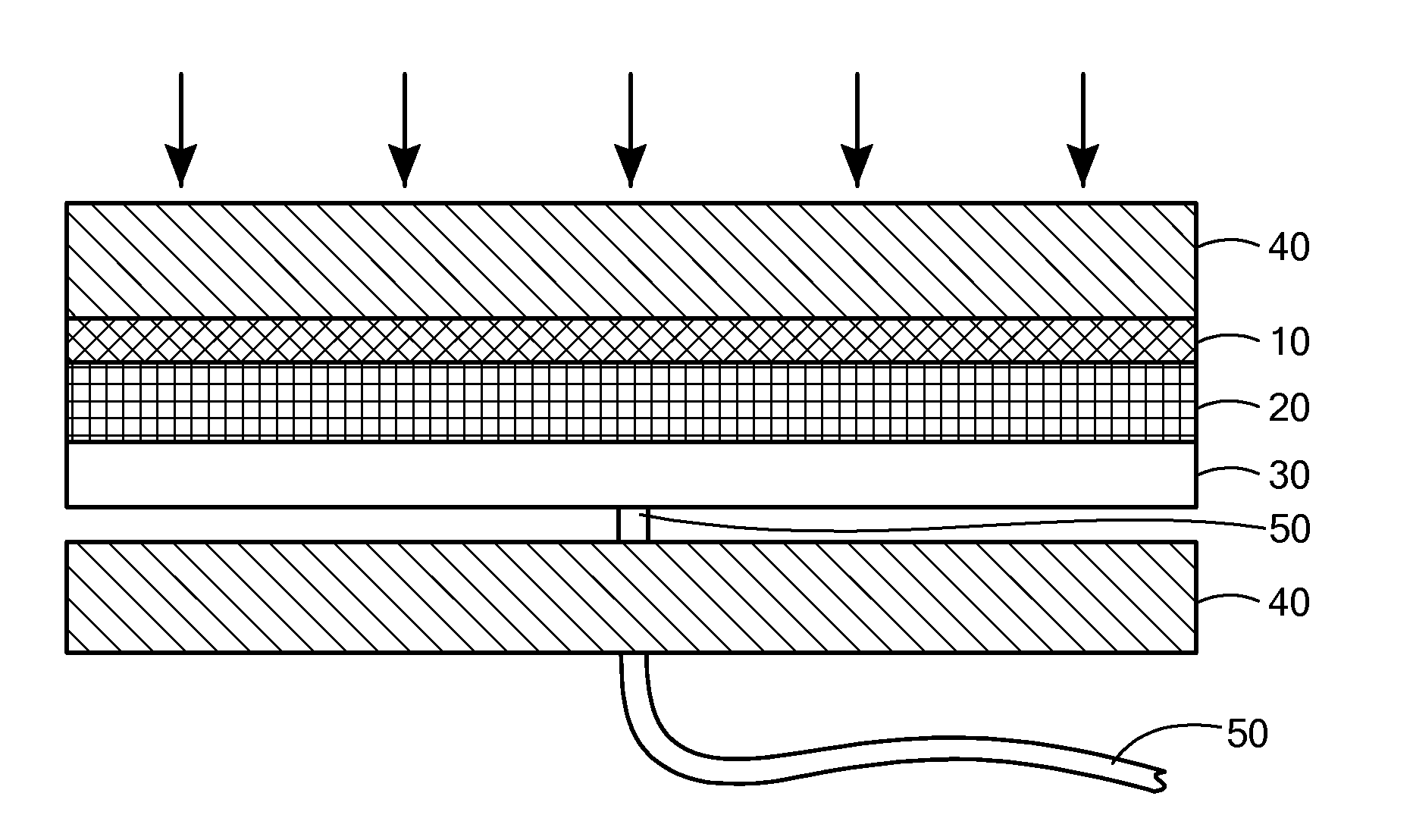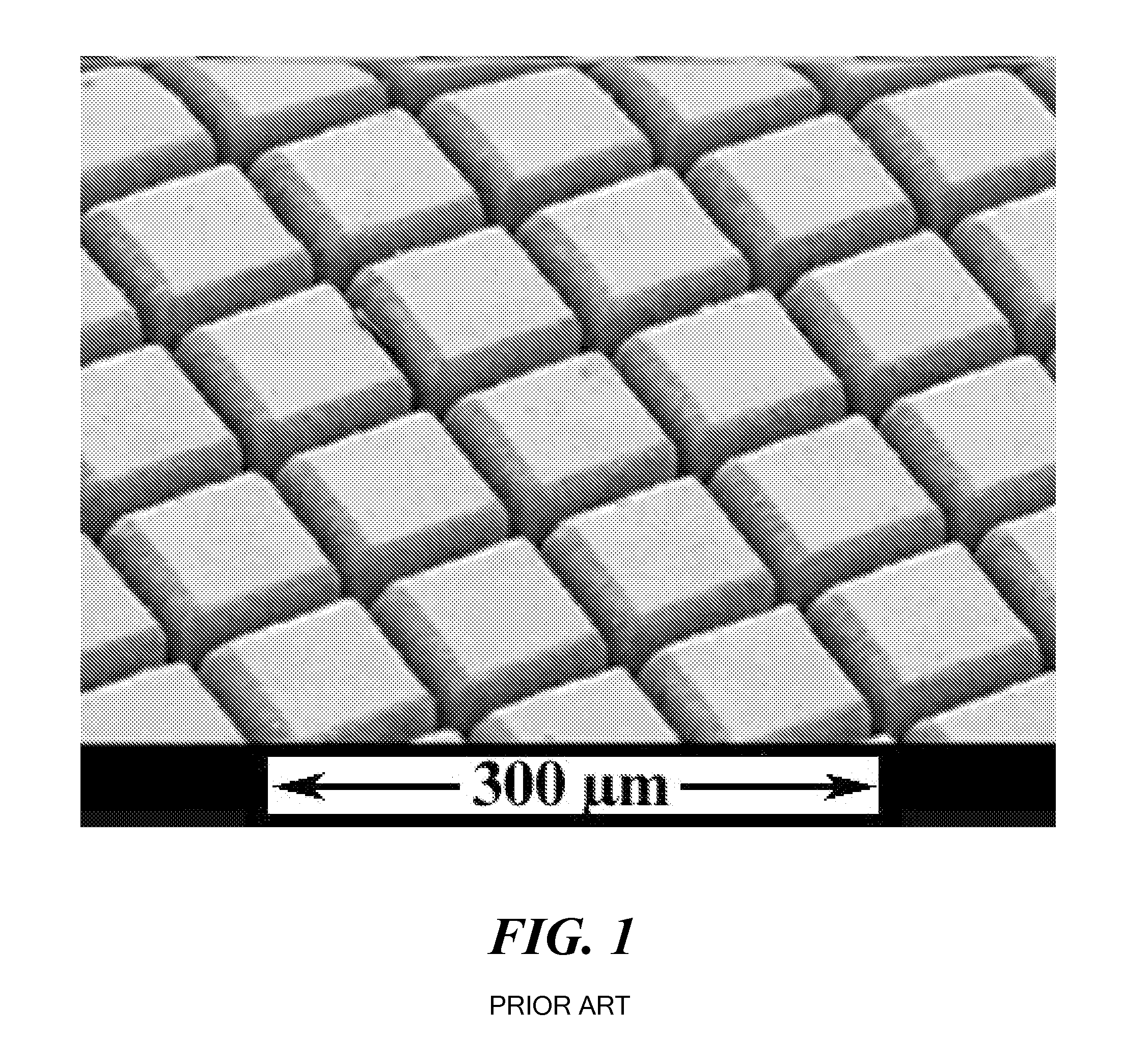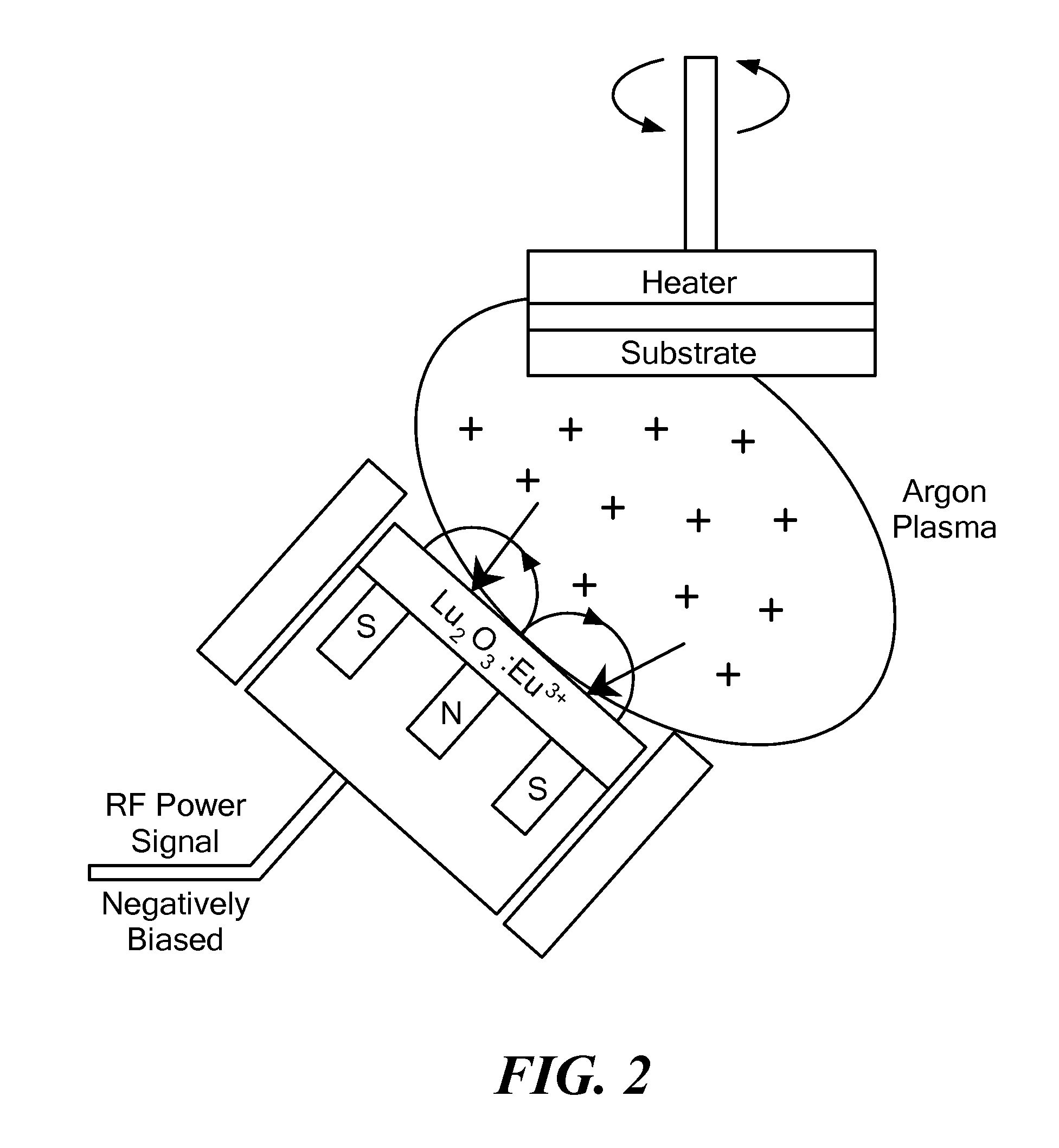Synthesis of advanced scintillators via vapor deposition techniques
a scintillator and vapor deposition technology, applied in the field of xray detectors, can solve the problems of limited commercial feasibility and limited small detector area, and achieve the effects of high atomic number, superior radiological imaging, and high efficiency in capturing high-energy photons
- Summary
- Abstract
- Description
- Claims
- Application Information
AI Technical Summary
Benefits of technology
Problems solved by technology
Method used
Image
Examples
example 1
Physical Vapor Deposition of Lu2O3:Eu Films
[0042]Films of Lu2O3:Eu3+ were successfully deposited using physical vapor deposition (PVD) carried out in a radio frequency (RF) magnetron sputtering device (see FIG. 2). The setup used a 2 inch diameter target angled at 45 degrees with respect to the substrate. The target was made by hot pressing Lu2O3 powder doped with 5 mol % Eu2O3 at 1700° C. using a graphite uniaxial hot press. A thin 2 inch diameter graphite disc was used as the substrate and it was rotated at approximately 20 rpm to increase uniformity. The RF power source was an Advanced Energy RFX600 capable of producing 600 Watts. Coatings were deposited at 50, 75 and 100 watts and examined. It was determined that 100 watts was the maximum useable power level, above which charging and target damage occurred. The coatings were examined using a Bruker D8 Focus X-ray diffraction (XRD) unit using Cu-Kα radiation to determine orientation, and a Zeiss field emission scanning electron m...
example 2
PVD Films Deposited on Heated Substrates
[0045]Deposition by PVD at a substrate temperature of 400° C. resulted in a coating that exhibits a significantly higher degree of orientation than that obtained at room temperature. FIG. 5A shows a plot of the XRD data for films deposited at increasing substrate temperature. The peaks remain slightly shifted toward higher unit cell dimensions, indicating some residual stress and suggesting the need for even greater thermal energy, perhaps by heating to 700-900° C. The micrograph of these fracture cross-sections (FIG. 5B) reveals a columnar structure, and the corresponding surface micrograph (FIG. 5C) contains randomly oriented pyramidal shapes similar to the 75 W coating in FIG. 3, suggesting that heated substrates accommodate higher material fluxes than they would otherwise tolerate at room temperature.
example 3
Effect of Heat Treatment on Lu2O3:Eu Films Deposited by PVD
[0046]To study the effects of annealing by heat treatment, coatings were post-treated in a tungsten furnace at 900° C. in an argon atmosphere for 2 hours. The samples from Example 1 were heat treated to increase crystallinity and observe changes in morphology. As seen in FIG. 17, the (100) peak reverted back to the theoretical position after heat treatment, indicating stress relief. However, associated with the restored unit cell is a subsequent volume change resulting in reduced thickness and cracking (FIG. 17). In the 100 W case, the volume distortion led to loss of adhesion, making further analysis on the heat treated sample almost impossible. One can observe in FIG. 17 that the morphology of the coating remained identical to the as-deposited coating, indicating stability of the coating. A small increase in the intensity of the (100) peak was observed, indicating slight grain growth or increase in crystallinity. In FIG. 1...
PUM
| Property | Measurement | Unit |
|---|---|---|
| pressure | aaaaa | aaaaa |
| temperature | aaaaa | aaaaa |
| temperature | aaaaa | aaaaa |
Abstract
Description
Claims
Application Information
 Login to View More
Login to View More - R&D
- Intellectual Property
- Life Sciences
- Materials
- Tech Scout
- Unparalleled Data Quality
- Higher Quality Content
- 60% Fewer Hallucinations
Browse by: Latest US Patents, China's latest patents, Technical Efficacy Thesaurus, Application Domain, Technology Topic, Popular Technical Reports.
© 2025 PatSnap. All rights reserved.Legal|Privacy policy|Modern Slavery Act Transparency Statement|Sitemap|About US| Contact US: help@patsnap.com



